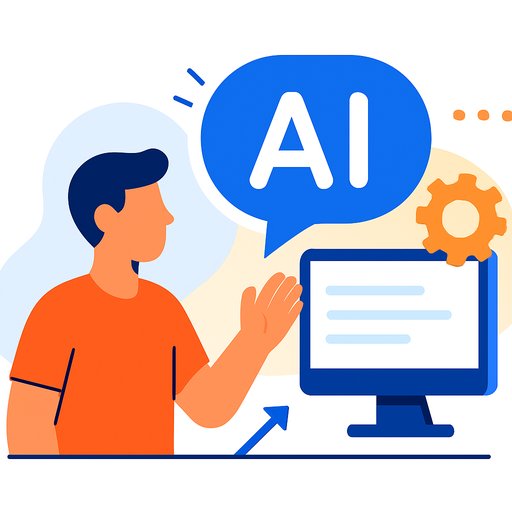Look Beyond AI's Quick Wins: The PR Agency Playbook Inspired by Battenhall
Drafts, summaries, and quick automations are entry-level. They reduce costs, but they don't create a durable lead for your agency. The real advantage comes from process redesign, data discipline, and how you deploy AI across teams and clients.
Here's a practical plan-shaped by the same mindset that leaders like Drew Benvie at Battenhall champion-to move past surface-level wins and build a system your clients can trust.
Principles that actually scale
- Quality over novelty: If it doesn't raise content quality or client outcomes, it's noise.
- Privacy-first: Client data stays safe by default. No personal data in public models.
- Transparent use: Be clear where AI is used in research, content, and measurement.
- Speed with review: Increase throughput, keep a human in the loop for high-impact work.
Operating model: How to run this, not just try it
- AI Council: Strategy, legal, data, and creative leaders meet bi-weekly to approve use cases and guardrails.
- R&D sprints: Test 1-2 use cases every two weeks, promote only what beats the current baseline.
- Playbooks: Short, role-specific SOPs for account teams, creatives, analysts, and new business.
- Model gateway: Central access to multiple models with logging, cost controls, and redaction.
Tech stack that supports client-grade work
- Model mix: Use different models for writing, analysis, and image/video to match the job.
- Data layer: Secure storage for briefs, tone guides, and client collateral to power retrieval-augmented prompts.
- Workflow tools: Automations for monitoring, content review, and reporting that plug into your existing stack.
Use cases that go beyond surface-level productivity
- Intelligence: Multi-source monitoring that clusters signals, flags anomalies, and drafts response options.
- Message-market fit: Compare key messages against audience sentiment and competitor narratives.
- Influencer due diligence: Automated red-flag checks across content history, audience quality, and brand risk.
- Creative variation at scale: On-brand headlines, hooks, and captions generated from a locked tone guide.
- Campaign pre-mortems: Scenario prompts to stress-test plans and surface likely failure points.
- Measurement that matters: Shift from vanity metrics to narrative momentum, share of voice by theme, and message uptake.
Governance: Protect trust and move faster
- Policy: What data is allowed, which tools are approved, and where human review is mandatory.
- Bias checks: Red-team prompts for sensitive topics and crisis content before publication.
- Audit trail: Log prompts, versions, and sign-offs for client and legal confidence.
For a useful framework on risk and accountability, review the NIST AI Risk Management Framework and the UK regulator's guidance on AI and data protection.
Skills: Train the team you already have
- Baseline for all: Prompt patterns, fact-checking, and client-safe workflows.
- Role depth: Analysts on data blending, creatives on structured ideation, AMs on using AI in client workshops.
- Weekly drills: 30-minute live sessions to practice one technique and share wins.
If you're building a structured program for PR and marketing roles, explore role-based AI courses and a practical marketing-focused certification.
Metrics your clients will care about
- Time to first draft: Reduce by 40-60% without lowering quality scores.
- Media intelligence lead time: Faster detection-to-response window on priority topics.
- Message adoption: Share of voice by key message, sentiment shift over time.
- Error rate: Factual mistakes and policy breaches trending down month over month.
- Unit cost: Cost per deliverable, including model usage, trending down while outcomes improve.
Change management that sticks
- Incentives: Recognize teams that ship client-safe automations and measurable wins.
- Champions: Appoint AI leads per team to coach, audit, and collect feedback.
- Client transparency: Tell clients where AI adds speed or insight, and where humans lead.
What "look beyond quick wins" really means
Drew Benvie's stance reflects what high-performing agencies discover fast: tools aren't the strategy. The edge comes from how you redesign workflows, codify quality, and prove value with numbers.
Make AI boring, predictable, and safe-and your creative work gets bolder because the foundations are solid.
Your 90-day plan
- Week 1-2: Approve policy, set up a model gateway, pick three must-win use cases.
- Week 3-6: Build playbooks, run A/B tests against your current process, ship the winner to one pilot account.
- Week 7-10: Train the team, formalize review steps, add measurement to every deliverable.
- Week 11-12: Roll out to three more accounts, publish client-safe case studies, and update the roadmap.
Bottom line
Quick wins prove interest. Systems create advantage. Build the machine now-your clients will feel the difference in speed, clarity, and outcomes.
Your membership also unlocks:






